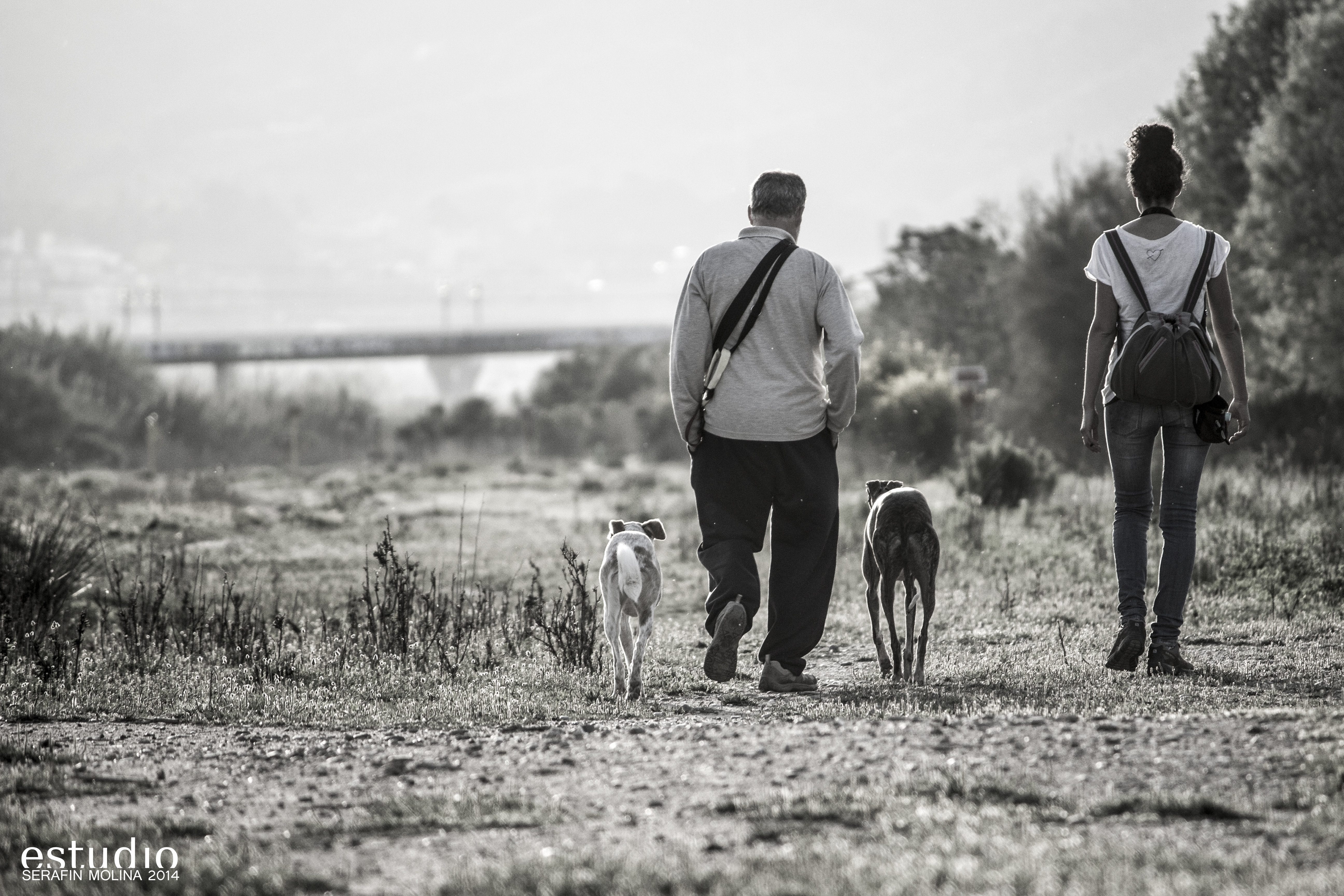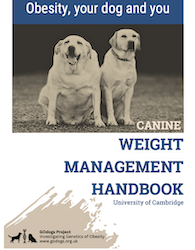In this section:
Turning ideas into action
The key to weight loss is food restriction combined with encouraging exercise. We have offered multiple ideas about how you can do this. The next step is to consider which changes you will make at home to achieve those aims. Use the questions below to prompt your thoughts and the next pages to write down which commitments you think are right for you.
Which diet would you like for your dog?
Specialist weight loss diets improve satiety and maintain vital nutrient concentrations.
How can you improve the accuracy of your feeding?
Can you use scales to weigh food? Batch weigh into bags to improve efficiency?
Will you stop giving treats, or find a way to compensate for treat-giving in the main ration?
What tactic will you use to reduce titbits? Can you give low-calorie titbits? Which ones? Should you compensate by reducing the main ratio? How will you achieve that accurately?
Can you increase the time your dog gets exercising?
Can you commit to longer walks? More frequent walks? More time outside? Toys in the home?
Can you improve the intensity of your dog’s exercise?
Will your dog play? Retrieve? Swim? Can you run or cycle with her? More time off the lead—do you need to sign up for dog training classes? Should you try a basket muzzle to reduce scavenging?
Can you distract your dog from hunger?
By offering distractions like toys or time outside?
Will you try out a puzzle feeder?
Perhaps kongs stuffed with frozen food, or food hidden outside? Will you give all or part of the ration like this? How will you organise it?
What else can you do to make good intentions a reality?
Overcoming barriers
What are the barriers to balancing your dog’s food and exercise correctly for weight loss? What can you do to overcome them?
Is family not supportive?
Can you share this information booklet with them to explain why dieting your dog is important?
Short on time?
Perhaps make the most of your visit today to plan easy and efficient changes you can make at home.
Worried about your dog’s welfare during dieting?
Make sure you build exercise and food toys into your plan to keep them busy and distracted from hunger.
Good intentions get forgotten during busy times?
Can you put up sticky notes to remind yourself of key actions? Set a phone alarm weekly to remind you to weigh out food?
Let's get started!
If you have made it here it probably is because you care about your dog's weight status and want to make sure that it is as healthy as possible, so let's start your dog's weight loss journey with three simple steps:
1.- Assess your dog's weight status
There are several scales used by veterinary professionals to assess weight status or Body Condition Score. We recommend a 9-point scale where 5 is ideal body weight and anything below or above is underweight or overweight respectively. Download this Body Condition Score chart and assess your dog's weight status. Then check with your vet or veterinay nurse if they agree with your conclusion. It is often easy to underestimate your own dog's Body Condition Score, and veterinary professionals, who use these scales on a daily basis, can help you to make sure that you both agree on the starting point.
2.- Write down your commitments to your dog's weight loss journey
Now that you know where your starting point is and what you can do to help your dog, let's make sure that you can commit to it. We propose that you download these Commitment Sheets and keep them next to your dog's food. There are four sections where you can write down your commitments towards your dog's diet changes, exercise habits, how are you going to respond to his/her behaviour when asking for food, and what barriers you anticipate. Take it easy and start by simple changes that you can maintain, then reassess it after a couple of weeks. For example, you might decide that when your dog wants your attention you will provide some play time or you will give him/her a massage instead of giving a treat, or you might decide that you will increase exercise habits by committing to a long walk at the weekend.
3. Make a plan
We know that weight loss is a long journey and not always easy, so make sure that you have a plan to overcome setbacks. On these Help Sheets, you will find a range of scenarios that you might encounter when dealing with the new situation with regards to your dog's dieting and exercising habits. For example, you might have committed to walking your dog 20 minutes every evening after work but a rainy winter night might become a bit of a challenge to keep these commitments. So, make sure that you have a plan B and for example, you can dedicate 20 minutes of indoor play with your dog instead. You may also have committed to not giving table scraps to your dog but then you find him/her staring at you while you are having dinner and can't resist the temptation. So, make sure that you have an alternative plan in place for when that happens, for example, give him/her dinner at the same time stuffed in a Kong, so is kept busy while you are eating.
Download the Help Sheets and identify all the possible scenarios that you might see yourself in and that can put at risk your dog's weight loss plan. Then make sure that you identify an alternative option on the list, or write it down yourself if you have a better plan!
4. Stay on track and keep records
Once you have decided how you will overcome barrier to diet and exercise your dog, and discussed a weight loss plan with your vet or veterinary nurse, make sure that you keep records of it. You can use these Planning and Record Keeping Sheets, to keep track of your weekly goals and ensure that you can measure objectively how your plan is going.
If you prefer, you can also download the printable Canine Weight Management Handbook, which contains all the information in this website and the interactive sheets that you will need to work through your dog's weight loss journey.



